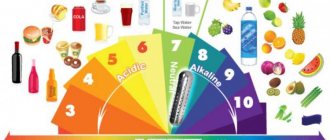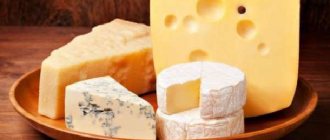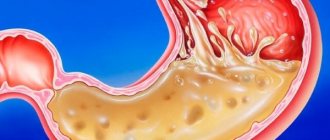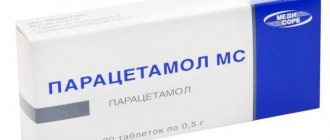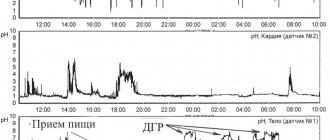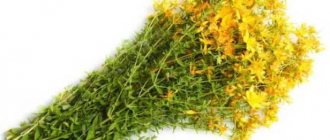For gastritis of any type, regular adherence to a special diet is indicated. This is not so difficult to do, the main condition is to follow the general principles and maintain a varied diet. But you will have to give up some foods completely or at least greatly limit their consumption. The basic principles of diet composition are described below.
Why follow a diet with low acidity?
The acidity of gastric juice is one of the indicators of general health. We don’t think about the significance of this indicator as long as everything is normal. As soon as this indicator exceeds the norm or is below the required level, digestive problems soon make themselves felt. It is obvious that the content of hydrochloric acid in gastric juice in excess of the norm leads to corrosion of the mucous membranes. Hence the inflammation and ulceration. But what goes wrong when there is not enough hydrochloric acid in the gastric juice? You should be wary of attacks by pathogenic microflora and insufficient secretory activity of the stomach, which means dyspeptic disorders and incomplete breakdown of food.
The course of digestive processes is determined by the concentration of gastric juice, and its composition is formed in two stages. The gastric mucosa contains two groups of glands. The first produces hydrochloric acid directly, and the second produces bicarbonates that neutralize it. Due to their mixing, the acid balance of gastric juice is formed. With reduced acidity of gastric juice, the following is observed:
- incomplete digestion of nutrients, especially proteins, so that the food consumed does not reach its full nutritional potential;
- weakening of local immunity and penetration of pathogenic microflora into the digestive tract - hence stomach upset;
- dysfunction of enzymes, which means that food is not digested enough and will begin to ferment - hence flatulence, belching, bad breath and discomfort/pain in the abdomen;
- intoxication of the body, since food in the digestive tract is not completely digested, the body’s immune defense is weakened and it is attacked by bacteria - hence the production and accumulation of waste and toxins, up to severe food poisoning.
Gastritis with low acidity most often develops in mature and elderly people, but it also occurs among young people. Globally, the consequence of the problem can be formulated as insufficient digestion of food, insufficient absorption of nutrients and vitamins by the body, and the inability to resist aggressive microflora. Very often, hypoacid gastritis is combined with hypovitaminosis (groups B, C). Patients complain of general weakness and malaise, unsatisfactory condition of skin, hair, nails, abdominal pain and dyspeptic disorders.
The processing of food entering it by the digestive tract, provided there is insufficient hydrochloric acid content, is accompanied by:
- belching or the urge to burp,
- stool disorders - frequent bowel movements (diarrhea) or delayed bowel movements (that is, constipation);
- nausea and heartburn.
It is impossible to constantly endure such a condition, and even if someone considers this possible for himself, he risks facing exacerbations of gastritis, severe forms of hypovitaminosis and all sorts of complications from duodenitis to malignant neoplasms.
The solution to the problem is both simple and complex at the same time. On the one hand, there is almost no point in pharmaceutical drugs; drug therapy can be an addition, and not the basis for normalizing low acidity of gastric juice. On the other hand, following a diet is not as easy as it seems - it turns out to be almost lifelong, deviation in some positions is accompanied by a sharp deterioration in well-being.
What not to eat
If gastritis with low acidity is detected, then it is better to forget about smoked, fatty, spicy foods, fermented cheeses, chocolate, coffee and carbonated drinks.
It is necessary to exclude:
- fresh cabbage;
- grape;
- different types of onions (fresh);
- any types of garlic;
- beans, peas and other legumes;
- baked goods;
- milk (you can add it to tea or porridge).
- raw ungrated vegetables, pickled and salted, onions, radishes, radishes, sweet peppers, cucumbers, rutabaga, garlic, mushrooms.
A patient with gastritis with low acidity is prohibited from eating whole milk, fresh dough products and grapes, which cause fermentation in the stomach, as well as sour cream, animal fats and cream, which are difficult for the stomach to digest.
For gastritis with low acidity, foods containing large quantities of fiber are excluded from the menu. You should avoid turnips, white cabbage, radishes, thick-skinned berries, raisins, prunes, and canned food. You should also avoid eating fatty meats, seasonings, spices, and sweet pastries. The course of the diet is at least three weeks.
Basic principles of a diet for low acidity
Nutrition with low acidity has both a functional and corrective value. You should go into an appropriate diet not on the basis of your own conclusions and conclusions, but only after a specialized consultation with a physician and based on the results of the diagnostics.
In the first stages, the digestive system will be able to cope exclusively with easily digestible food, and subsequently the nutrition agreed upon with the gastroenterologist will have to fit into the general lifestyle. This way it will be possible to soften the negative processes in the digestive tract, and over time, minimize them.
The goal of a low acidity diet will always be to stimulate the production of gastric juice. It is important to focus on products that do not irritate the walls of the stomach, but at the same time stimulate the secretion of the digestive organs.
Among the basic principles:
- multiple meals - 5-6 times a day, but in smaller portions;
- chewing food thoroughly - it is very important to eat slowly and chew each piece well, because the digestion of food begins in the oral cavity under the influence of saliva;
- in order to facilitate the digestion of food in the digestive tract, it is appropriate to resort to pureeing as often as possible among all types of culinary processing, and it is better to mash vegetables and fruits (containing fiber that is not always easily digestible) before pureeing;
- as with gastritis with high acidity, it would be correct to refuse too cold or too hot food;
- refusal of products that cause fermentation processes - whole milk, cream, sour cream, refractory cheeses, freshly baked confectionery, chocolate, baked goods (yeast-based), radishes, garlic;
- regarding obviously “unhealthy” foods and bad habits:
- you will have to give up smoking completely,
- reduce the consumption of alcohol and carbonated drinks/water to a minimum,
- but moderate coffee consumption is acceptable,
- although preference is given to steaming and baking in its own juice, after a month or two after an exacerbation, you can resort to frying food, but not until crispy;
- smoked, salted, hot and overly spicy - this is a risk area,
- but pickled vegetables, rich broths and even herring contribute to increased acid formation (and this is our goal).
What can you eat
Recommended dishes and products for a patient with gastritis with low acidity are:
- soups with weak fish broth,
- steam cutlets,
- fresh cottage cheese,
- omelettes,
- cheese without spices,
- porridge,
- eggs,
- pasta,
- white bread crackers.
Berries fruits must be present in the diet every day , and vegetables are recommended to be taken in the form of mousses and purees.
The exceptions are spinach and sorrel - they should be avoided completely.
With all this, nutrition can be quite varied and even includes sour foods or fried foods. However, oil can only be consumed with restrictions, and the food itself should not be too hot (up to 60 degrees is allowed) or cold (at least 15 degrees) .
Dishes of varying degrees of grinding and heat treatment are allowed - boiled, stewed, baked, fried without forming a rough crust (without breading in breadcrumbs or flour). Puree dishes are made from foods rich in connective tissue or fiber.
Avoid foods and dishes that linger in the stomach for a long time, are difficult to digest, and irritate the mucous membrane of the gastrointestinal tract.
Chemical composition and calorie content:
- carbohydrates - 400-420 g,
- proteins - 90-100 g (60% animals),
- fats – 90-100 (25% vegetable),
- calories - 2800-3000 kcal,
- sodium chloride - up to 15 g,
- free liquid - 1.5 l.
Diet: 5-6 times a day without large meals.
Allowed drinks
Drinks recommended for consumption for gastritis with low acidity: diluted cream, jelly, compotes, juices from fruits and berries that do not contain acid.
Coffee lovers are allowed to drink no more than one serving of the drink during the day; cocoa must be diluted with milk.
Products for a diet with low acidity
Some foods in a diet with low acidity are completely opposite to those with high acidity. Others largely coincide with the menu for hyperacid gastritis. Let's get into the details:
- bread - it should be present in the diet, but stale or slightly dried; It is not at all necessary to refuse rye bread, unless there are manifestations of flatulence; You will still have to give up baked goods, as well as fried pies or fatty crumpets;
- cereals - buckwheat, oatmeal, rice and other cereals are recommended, with the exception of pearl barley;
- meat and fish - the presence of lean varieties of both meat and fish in the diet is welcome; these are lean parts of beef, chicken, turkey, as well as pollock or cod, but not salmon or halibut;
- vegetables - cabbage, zucchini, pumpkin, carrots, potatoes, ripe tomatoes, greens (except onions), cucumbers, beans are allowed; turnips, baked and with vegetable oil, are regarded as a folk remedy that significantly facilitates the functioning of the gastrointestinal tract; hard-to-digest vegetables (cabbage, legumes) should not be consumed during periods of exacerbation;
- fruits and berries are allowed, but in moderation, citrus fruits, as well as apricots, fleshy grapes, strawberries, raspberries, wild strawberries, black currants, gooseberries;
- Among dairy products, it is better to give preference to low-fat cottage cheese, milk, good hard cheese, kefir and natural yoghurts; fatty dairy products, including butter, may be present in the diet, but in very small quantities and rarely;
- As for drinks, juices or fruit drinks made from sea buckthorn, lingonberries, cranberries, and rose hips are recommended; occasionally kvass and coffee are allowed; It is better to avoid strong tea and alcohol-containing drinks;
- The use of broths - vegetable, meat, fish - is encouraged; outside periods of exacerbation of gastritis, a portion of meat/vegetables along with such broths, that is, full-fledged soups, is also allowed
What can you eat if you have gastritis with low acidity?
In this case, the task of therapeutic nutrition is to stimulate the production of hydrochloric acid, which is synthesized by stomach cells in insufficient quantities. However, the diet can be quite varied and even includes sour foods or fried foods. However, oil can be consumed only with restrictions, and the food itself should not be too hot (up to 60 degrees is allowed) or cold (at least 15 degrees).
It is allowed to consume many products, including baked goods, meat, fruits, berries, and vegetables, fresh and processed. However, it is necessary to exclude:
- fresh cabbage;
- grape;
- different types of onions (fresh);
- any types of garlic;
- beans, peas and other legumes;
- baked goods;
- milk (you can add it to tea or porridge).
Cereals can be consumed, but they need to be thoroughly digested or even pureed.
Menu option for treating low acidity:
- Breakfast: semolina-based pudding, wheat bread (must be dried in advance), juice diluted with water, a piece of cheese.
- After 2 hours: a glass of tea, apples in the oven (you can add a little honey).
- Lunch: lean beef (can be in cutlet form), cabbage soup, pureed cauliflower.
- Afternoon snack: jelly from any fruit, boiled oatmeal porridge.
- In the evening: fish in the oven, chicken noodles (soup) and fruit compote.
- Late dinner: kefir 200 ml (one glass).
In this case, you also need to monitor calorie content. But if the weight is within the normal range, the requirements are not so strict - about 2000-2500 kcal can be supplied per day.
Folk secrets for low acidity
Some absolutely everyday foods, if consumed regularly and in a certain quantity, partly turn into folk medicines. In order to increase the acidity of gastric juice, you can go into the following secrets:
- the power of honey:
- mix honey and butter in equal proportions; take 1 tbsp. 3-4 times a day half an hour before meals;
- ½ tsp. dissolve flower honey in ¼ cup of warm boiled water; take 3 times a day 20-30 minutes before meals;
